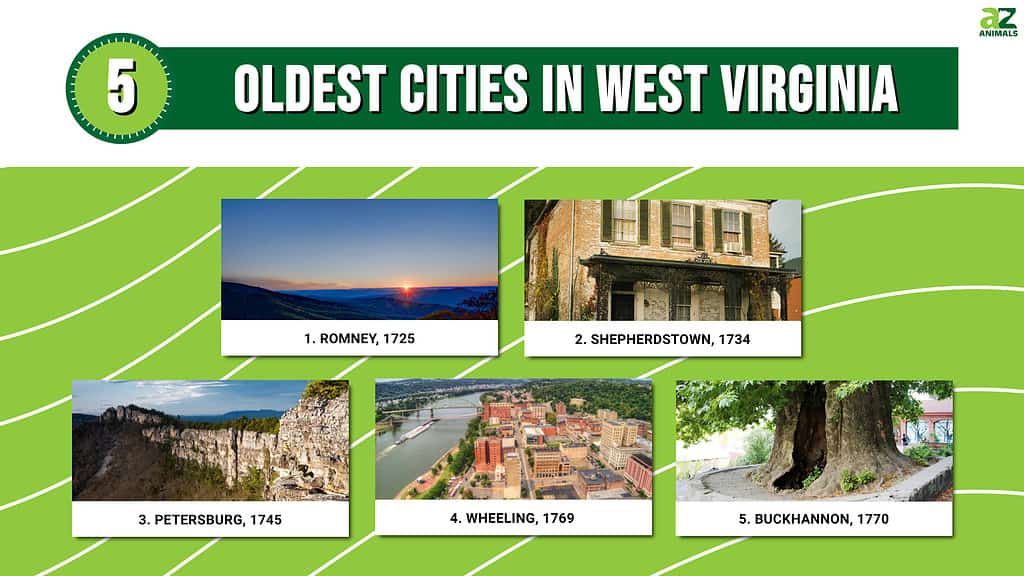
Paradoxically, West Virginia was part of the original 13 colonies of the United States, yet it didn’t become a state until 1863. As you probably know, there was only one big Virginia until the Civil War. When Virginia seceded from the Union, its western, Appalachian counties remained loyal to the Union and split off to form the new state of West Virginia. In the years since West Virginia has developed a distinct culture and a reputation for some of the most beautiful wilderness in the country. In this article, we will look at some of the oldest cities in the state as a sample of what it has to offer.

The New River Gorge Bridge in West Virginia spans the river valley at dizzying heights and, in good weather, offers spectacular mountain views.
©Mitchell Moreland/Shutterstock.com
1. Romney, 1725 (Population 1,724)
Romney was settled on the Potomac River at the site of a French fort. It was renamed after an English town and became a thriving area for hunters, traders, soldiers, and explorers. The area was settled mainly by Scotch-Irish immigrants. During the Civil War, Romney reportedly changed hands between North and South 56 times before the defeat of the Confederacy! After the war, Romney was noted mainly as the location of a school for the deaf and blind, and for its fruit orchards.
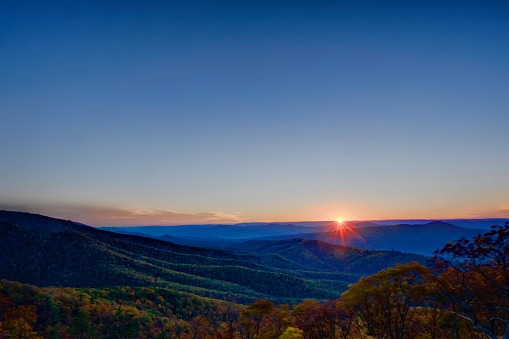
Romney, West Virginia offers spectacular sunsets.
©Daniel Friend/ via Getty Images
Romney attracts vacationers who come to camp by the river, hunt, fish, and boat. A fun and unique attraction is the Potomac Eagle, a scenic rail excursion through a river canyon that is home to bald eagles. History buffs can visit Taggart Hall Civil War Museum as well as see throughout the area historic landmarks, battlefields, and cemeteries that give testimony to the high human cost of the Civil War. If you’re passing through, don’t leave without stopping in at Bent River Trading Company in Hampshire County. There, they have 160 vendors of products made in West Virginia, like scented candles, wood carvings, jams, quilts, collectibles, pottery, classwork, and much more.
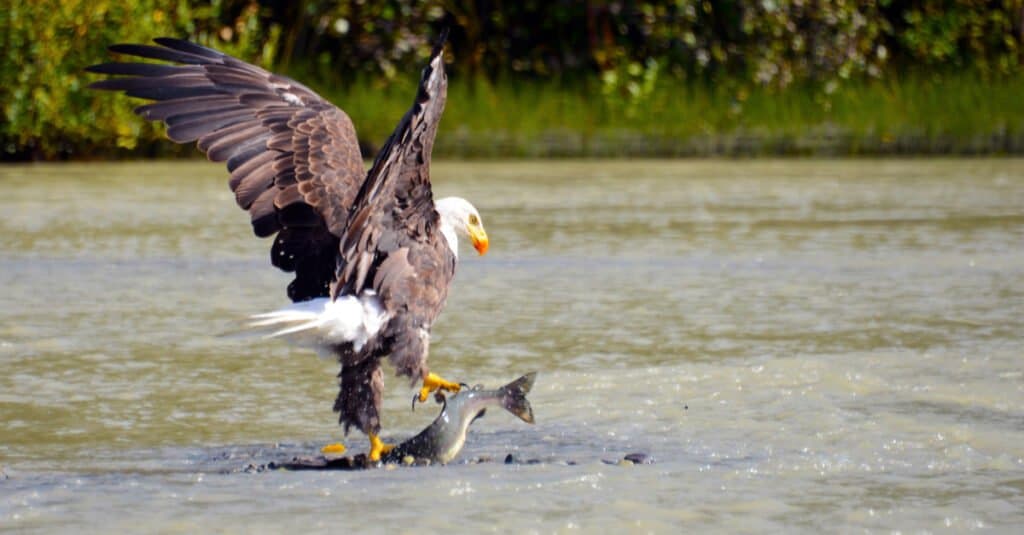
Bald eagles live in the mountains near Romney. You can take a scenic train ride through their habitat and try to spot them.
©jbieger/Shutterstock.com
2. Shepherdstown, 1734 (population 1,531)
Shepherdstown is on the Potomac River in the Shenandoah Valley, which lies mostly in Virginia but also stretches north into the eastern panhandle of West Virginia. Many of the oldest cities in West Virginia are clustered in this area because there was well-watered farmland that was relatively flat or had gently-rolling hills. A notable asset for Shepherdstown is that it has six natural springs and is not subject to flooding. It also has good clay for brickmaking, so this made it an attractive place for artisans to set up shop. Troops from Shepherdstown helped put down John Brown’s Raid, a famous attempt by an abolitionist to start a slave insurrection leading up to the Civil War. In more recent history, Shepherdstown was the location of peace negotiations between Syria and Israel in the year 2000.
Ghosthunters have alleged that Shepherdstown is the most haunted town in America, and a cable program was made about it called Ghosts of Shepherdstown. If you’d like to try to see a ghost yourself, a good place to start is Shepherdstown Museum, located in a building that was formerly a historic hotel. A recreated hotel bedroom upstairs is claimed to be the haunt of William Payton Smith, who died in a duel in 1809. You might also try the award-winning Bavarian Inn with international cuisine, including German favorites like wiener schnitzel, sauerkraut, bratwurst, and knackwurst. You can also try New Zealand lamb racks if you’re so inclined. There are live music performances on the weekends.
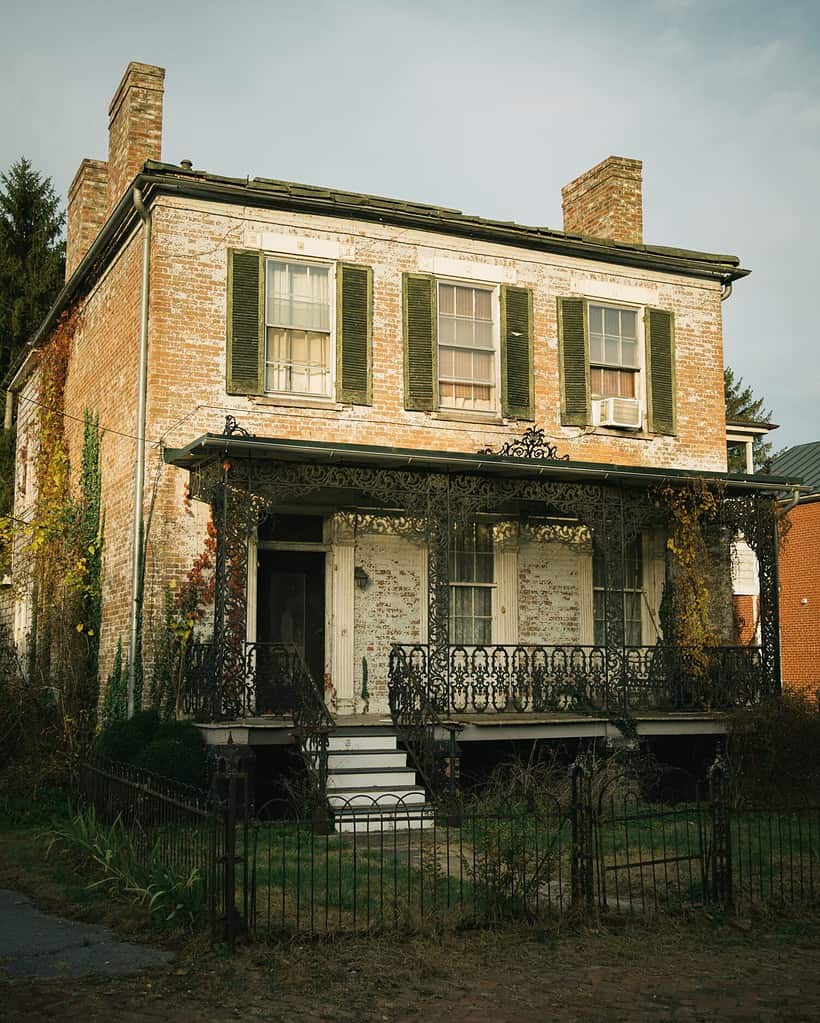
Paranormal investigators have claimed that Shepherdstown is one of the most haunted places in America.
©Jon Bilous/Shutterstock.com
3. Petersburg, 1745 (population 2,284)
Petersburg, West Virginia might seem to some people like a sleepy, out-of-the-way place, but in the U.S. Census of 1830, it was calculated to be only 9 miles from the center of the population of the whole country. The community itself has never grown to a large size but has been a center serving local farmers. Livestock, fruit, grain, tobacco, and timber are some of the main products of the area.
Petersburg has two particularly interesting natural features in nearby mountains that attract adventurous tourists:
- Smoke Hole Canyon is an 18-mile gorge carved by the Potomac River. According to legend, Native Americans smoked meat in a cave in the canyon. Saltpeter was mined for gunpowder production there during the War of 1812 and the Civil War. Moonshine whiskey was also produced in this rugged backwoods area, and government agents trying to investigate had been known to disappear there.
- The Petersburg Wave is a strong updraft formed by wind sweeping over a plateau, plunging to the valley floor, and crashing against the opposing incline to create sustained lift on that side. It’s a popular location for gliders, especially in March when the wind is strong. Almost all of the East Coast altitude records for gliders have been set at the Petersburg Wave.
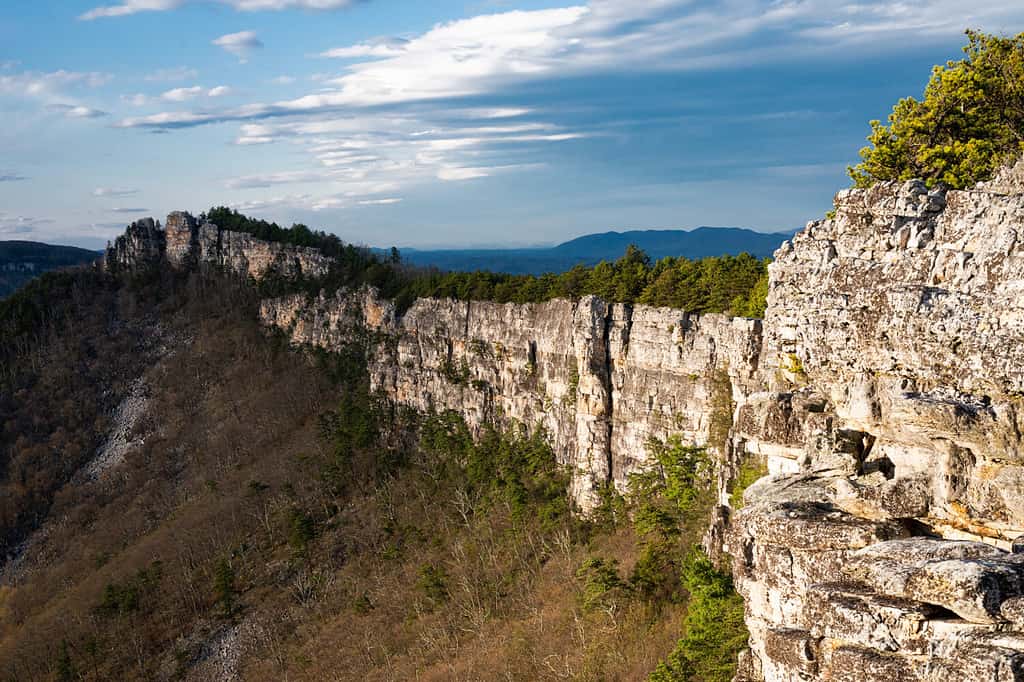
Smoke Hole Canyon, West Virginia. This rugged wilderness area had a reputation for harboring moonshiners who didn’t take kindly to strangers nosing about their business.
©Jason P Horne/Shutterstock.com
4. Wheeling, 1769 (population 27,052)
Wheeling is in West Virginia’s narrow northern peninsula, which lies between the Ohio River and the Pennsylvania border. This strip of land was the unusual outcome of a boundary dispute between Virginia and Pennsylvania when the borders were being established. A terrifying story from 1777 tells of Samuel McColloch, a local settler, who was chased by hostile Native American warriors. With nowhere else to escape, he forced his horse to jump off a 300-foot-high ridge that by all rights should have killed him and his animal, yet miraculously, they both survived and escaped. Since then, the site has been named “McColloch’s Leap.” Another claim to fame for Wheeling is that it was connected to the country’s first road project, the National Road, which started at Cumberland, Maryland, and reached Wheeling in 1818. At the time, Wheeling was considered the “Gateway to the West.”
Wheeling is home to the Capitol Theater, which opened in 1928 and has hosted performances by a multitude of famous musicians, comedy acts, and other entertainers. In July over 100,000 music fans pack into Wheeling for Jamboree in the Hills, a celebration of country music. Other tourists come to Wheeling for river cruises or the casino and greyhound race track. There’s pretty much something for everyone in Wheeling.
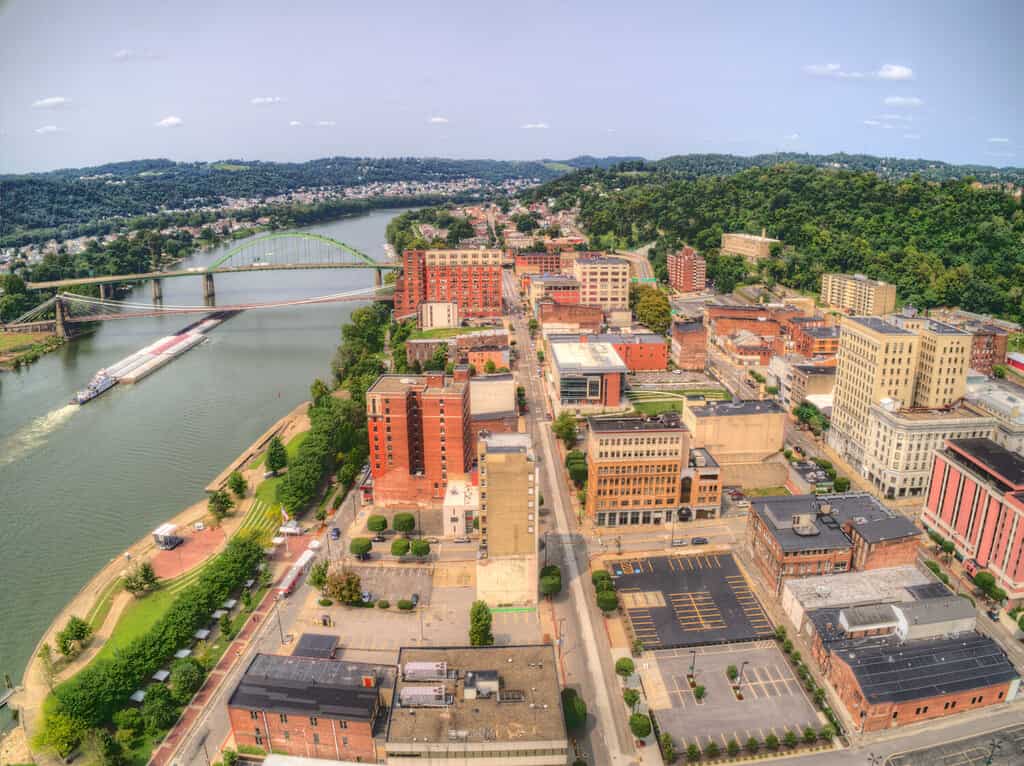
A view of downtown Wheeling, West Virginia, and the Ohio River.
©Jacob Boomsma/Shutterstock.com
5. Buckhannon, 1770 (population 5,186)
According to legend, two of the first residents of the area that is today Buckhannon were a couple of brothers who deserted from the army in 1761 and lived for three years in a hollow sycamore tree stump more than 8 feet wide. This may seem far-fetched, but in fact, in ideal conditions, sycamores can grow to 175 feet tall and have a diameter of 14 feet. It is not unusual for a hunter to take shelter in a hollow sycamore from rain or to sleep overnight. One of the brothers ended up founding the town of Buckhannon in the area. Buckhannon was considered a possible capital for West Virginia as it was roughly centrally located, but it was passed over to Charleston, which had a wider river to support commerce. The region made national news for a tragic disaster in 2006, when a lightning strike hit a methane pocket and caused an explosion at the Sago coal mine, killing 12 people. This was about 8 miles from Buckhannon. Coal mining has been an important pillar of the economy of West Virginia, but tragedies like this, as well as environmental concerns, have made it controversial.
The city has held an annual Strawberry Festival every May since 1936. You can visit the Pringle Tree which features in the town’s founding lore. The current tree is said to be the third generation of this sycamore, which grew from the roots of the original. Buckhannon is also only a few miles from the West Virginia State Wildlife Center, a rescue specializing in local species. It is a self-guided tour experience with exhibits close to the trail and is advertised as handicapped accessible. Be aware, though, in some places, the boardwalk is steep and can be slippery near the edges because of moss. Animals in the exhibits are quite close to the trail, but if other spectators are noisy it can scare the animals into hiding.
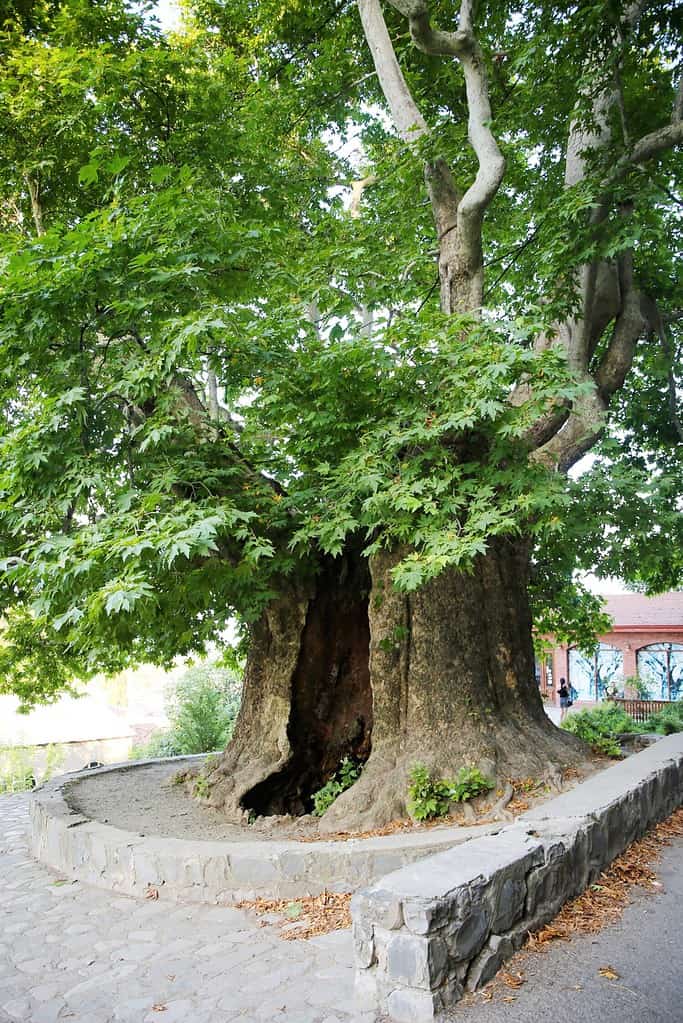
According to legend, the founder of Buckhannon lived in a hollow sycamore tree stump. The tree in this picture is a 900-year-old sycamore in the country of Georgia, in the Caucasus. But it illustrates how large the species can grow.
©Olga Geo/Shutterstock.com
Wild, Wonderful West Virginia
A longstanding advertising motto for the state is “Wild, Wonderful West Virginia.” It’s really a suitable slogan for a state with so much unspoiled natural beauty, even after hundreds of years of settlement and extraction of resources. Our little tour of some of the oldest cities in the state shows that it really is something special, with a colorful history, memorable folklore, and maybe even a ghost or two. Hopefully, you’ll get a chance to visit West Virginia and have a wild, wonderful time yourself.
Summary of the 5 Oldest Cities in West Virginia
| Rank | City | Year Settled |
|---|---|---|
| 1 | Romney | 1725 |
| 2 | Shepherdstown | 1734 |
| 3 | Petersburg | 1745 |
| 4 | Wheeling | 1769 |
| 5 | Buckhannon | 1770 |
The photo featured at the top of this post is © G. Edward Johnson, CC BY 4.0
Thank you for reading! Have some feedback for us? Contact the AZ Animals editorial team.






